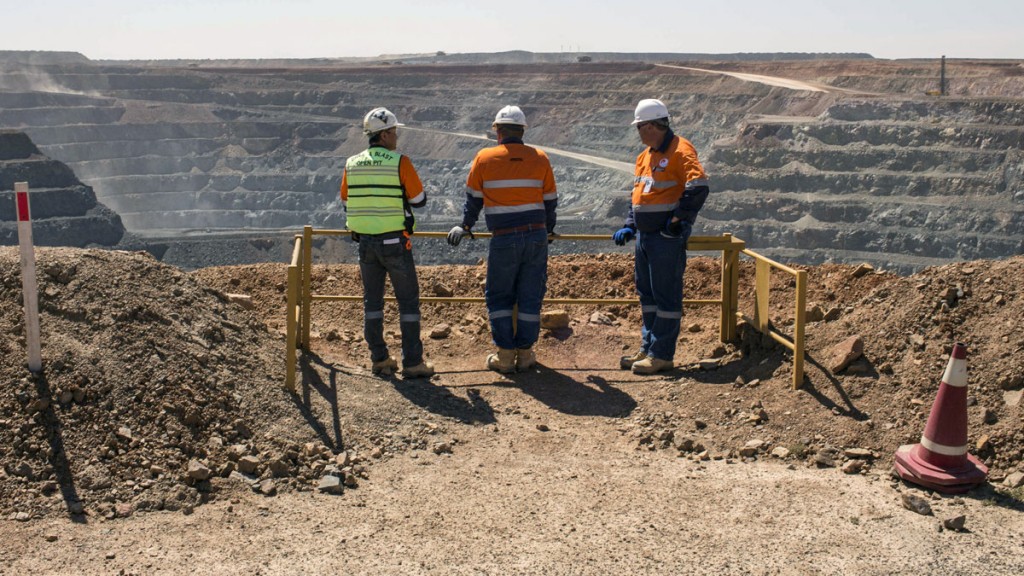
People sometimes ask me whether you should own commodities – oil, copper, cotton, all that “stuff” – in your portfolio, as a diversifier.
No, is the short answer (with the exception of monetary metals, which are an entirely different asset class).
Commodities costs you money to hold, their price is incredibly volatile, and over the long run, most of them lose value, because if there’s a genuine shortage, people find substitutes – they have to.
But while holding commodities themselves isn’t a good idea, commodity-producing stocks are an entirely different kettle of fish…
A strong case for buying resources stocks
US wealth manager GMO has just put out an interesting note on resource equities – oil producers, miners and the like.
The group points out that investing in the resources sector provides diversification benefits. Over ten years, energy and metals companies are negatively correlated with the rest of the US stockmarket. In other words, when resources stocks are doing well, other sectors aren’t, and vice versa.
Resource stocks also do well during inflationary periods. Most equities run into trouble when inflation hits the 5% mark and above. However, “historically, resource equities have not only protected against inflation but have actually dramatically increased purchasing power during inflationary periods.”
Inflation might not sound like much of a worry right now, but as GMO puts it, better safe than sorry. “We believe unexpected inflation risk is one of the two big risks that long-term investors face, along with depression risk”.
Perhaps most importantly, resource stocks currently look cheap relative to the rest of the market. “When valuations relative to the market have been in the cheapest quintile of history” (as they are now) “the commodity producers have outperformed the broad market by almost 7% per annum over the next five years on average.”
The investors’ wager: you might as well believe that Malthus was wrong
There is a key point on which I disagree with GMO – this idea that commodity prices will rise in “the decades to come due to growing demand and the finite supply of cheap resources”.
This notion that commodities will at some point “run out” as a result of rampant demand growth, and that their long-term prices will therefore be permanently higher, has been proved wrong time and time again, since the days of the Reverend Malthus and (I suspect) before then too.
Of course commodity prices rise over a cycle. But they fall too. To understand this, as MoneyWeek contributor and financial historian Edward Chancellor points out in his book, Capital Returns: Investing Through the Capital Cycle, the key thing that an investor needs to focus on is supply, not demand. One is relatively predictable – the other is not.
This applies to every industry, not just resources, but it’s probably more obvious in the commodities sector than in any other. We’ve described the commodity cycle here more times than I care to remember, but it goes roughly like this:
Demand outstrips supply; prices go up, so producers boost supply. If prices keep going up, consumers hunt for substitutes and efficiencies. Eventually, producers produce too much and consumers find more efficient methods and viable substitutes. Supply overwhelms demand, prices crash and supply falls. Rinse and repeat, ad infinitum.
That’s human ingenuity – inspired by necessity or the profit motive – at work. So as far as I’m concerned, if a forecast can be described as Malthusian, then you might as well ignore it. (And if it has become “accepted wisdom” – as Peak Oil did for a short period of time – then treat it as a contrarian indicator.)
Some of you will think that sounds glib. The darkly foreboding, “winter is coming” quality of Malthusian forecasts has a certain romantic appeal to many. So let me explain my rationale.
I’m not saying I’m right. At some point in the future, human ingenuity may fail us. We may reach a plateau where we run out of some vital resource – something that can’t be found or replaced, not at any price.
But if that happens, then investing for the future will be the least of your worries. Forget your Sipp or your Lifetime Isa. Survival – Mad Max-style – will be what matters. So it’s not really an outcome to invest for, beyond holding some gold (or silver in this case) in a physical, easily transportable (and preferably divisible) form.
It’s a little like the investment equivalent of Pascal’s wager. As an investor, you might as well believe that the long-term destiny for commodities is to lose money in “real” terms, because the alternative rather renders the point of investing moot.
(Pascal was a 17th century French philosopher who argued that when it came to religion, it was rational for human beings to behave as though God exists, because the downside of being an unbeliever and being wrong – eternity in Hell – was infinite, while the upside – a bit of guilt-free debauchery, not having to go to church on Sunday – was finite).
Anyway, you can discuss all that in the comments section on the website if you feel like it.
But from an investment point of view, it looks like a pretty good time to be investing in mining and resources stocks. We covered the gold mining sector in a recent issue of MoneyWeek magazine, and we’ll be looking at the wider sector in more detail in a future issue. If you’re not already a subscriber, sign up now.